Introduction
I have been planning to write something about this subject for a long time. But to start with, there is not that much data available. So this analysis is based on relatively little, but still very useful data, in connection with personal observations from Nam Kok Tsui on Po Toi Island. This analysis is by no means a final one, but rather a starting point for further study.
One of the issues is that most observations from a boat of individual birds do not point to an exact location on eBird. Most birders (yes, myself included) simply use “Southern Waters pelagic” as location on eBird. But the few sightings with exact locations are still useful, as we will illustrate below.
Spring migration
Based on data from Trektellen, during our 2021 and 2022 seawatching surveys, we’ve counted about 25,000 birds flying to the northeast (northbound) and about 30,000 to the west (southbound). I think we would need a few more years of intense seawatching efforts (and I’m not sure that will be the case) in both seasons, but it could be that spring and autumn are similar, with autumn probably a bit busier due to the number of juvenile or first calendar year birds among migrants.
Another difference is that northbound birds in general fly closer to Po Toi than southbound birds.
Coming to the point of migrating routes, there is more logic to it in spring than in autumn, I believe. In spring, seabirds are heading northwards and fly mostly to the northeast before they approach Hong Kong. Other migrants, such as terns, gulls and waders follow the coast towards the northeast. Note that this is just a guess, I have no data to back that up. But it makes sense. Seabirds then approach land, say between Yangjiang and Macau. They continue to fly northeast and end up between Macau and Lantau Island. Realizing they’re approaching land and likely can smell the water from the Pearl River, they bend to the east.
This is pointed out on these illustrations.

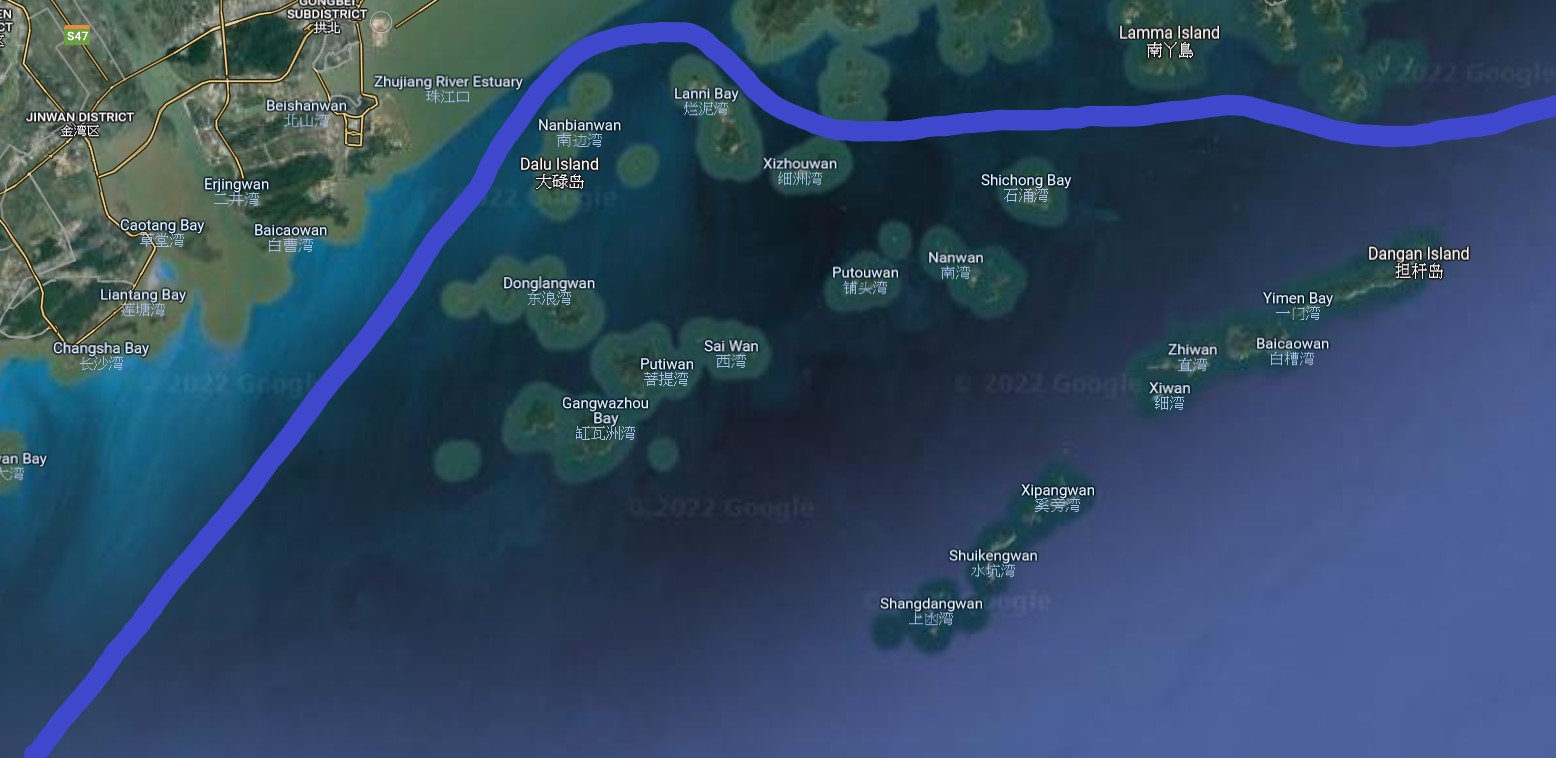
Likely route (1) of seabirds

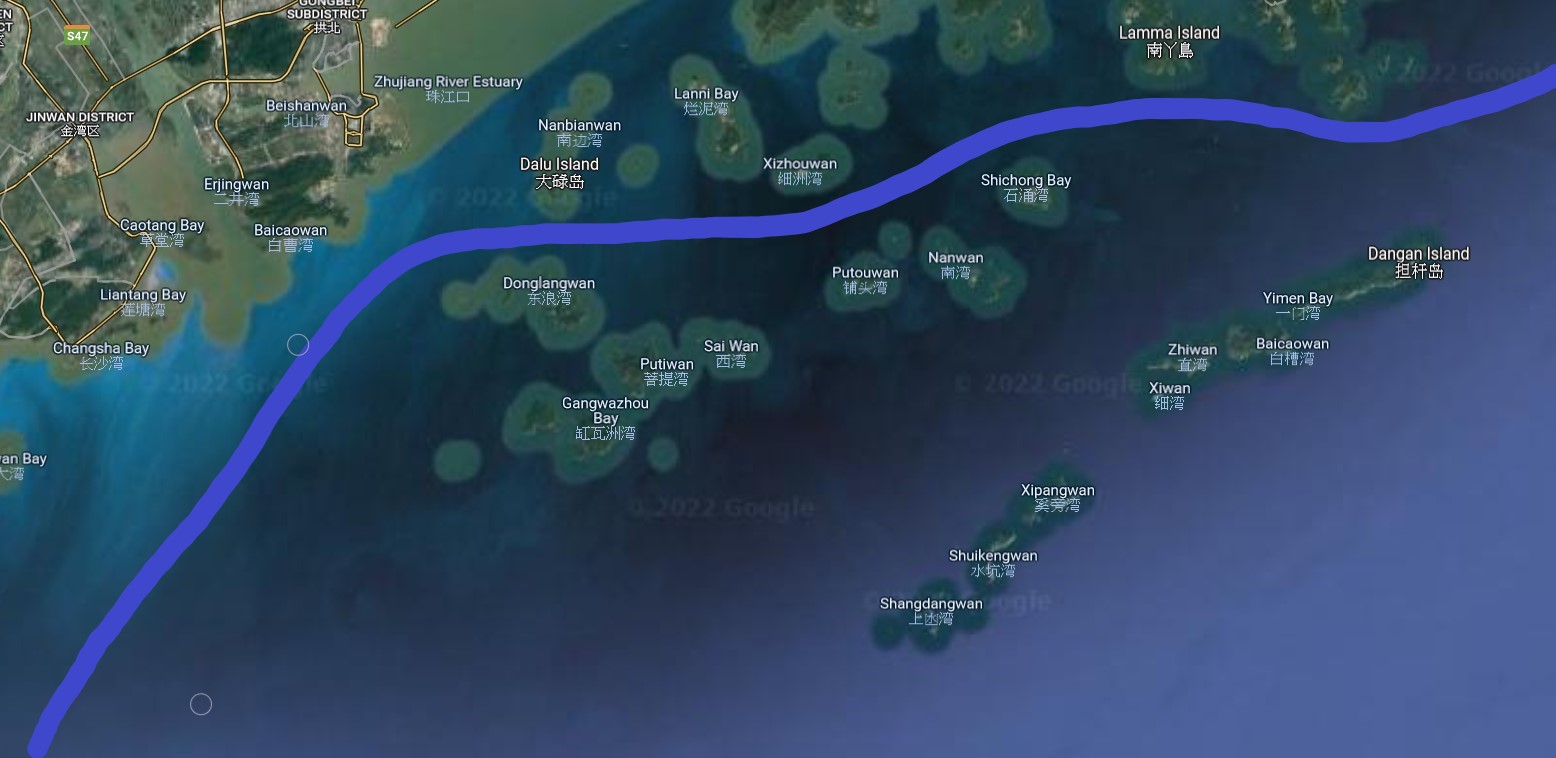
Another likely route (2) of seabirds
A possible, alternative route is unknown, as I cannot find any records of sizeable numbers of seabirds along that route. And virtually all seabirds that are seen from Po Toi in spring approach the island from the west, not from the southwest.

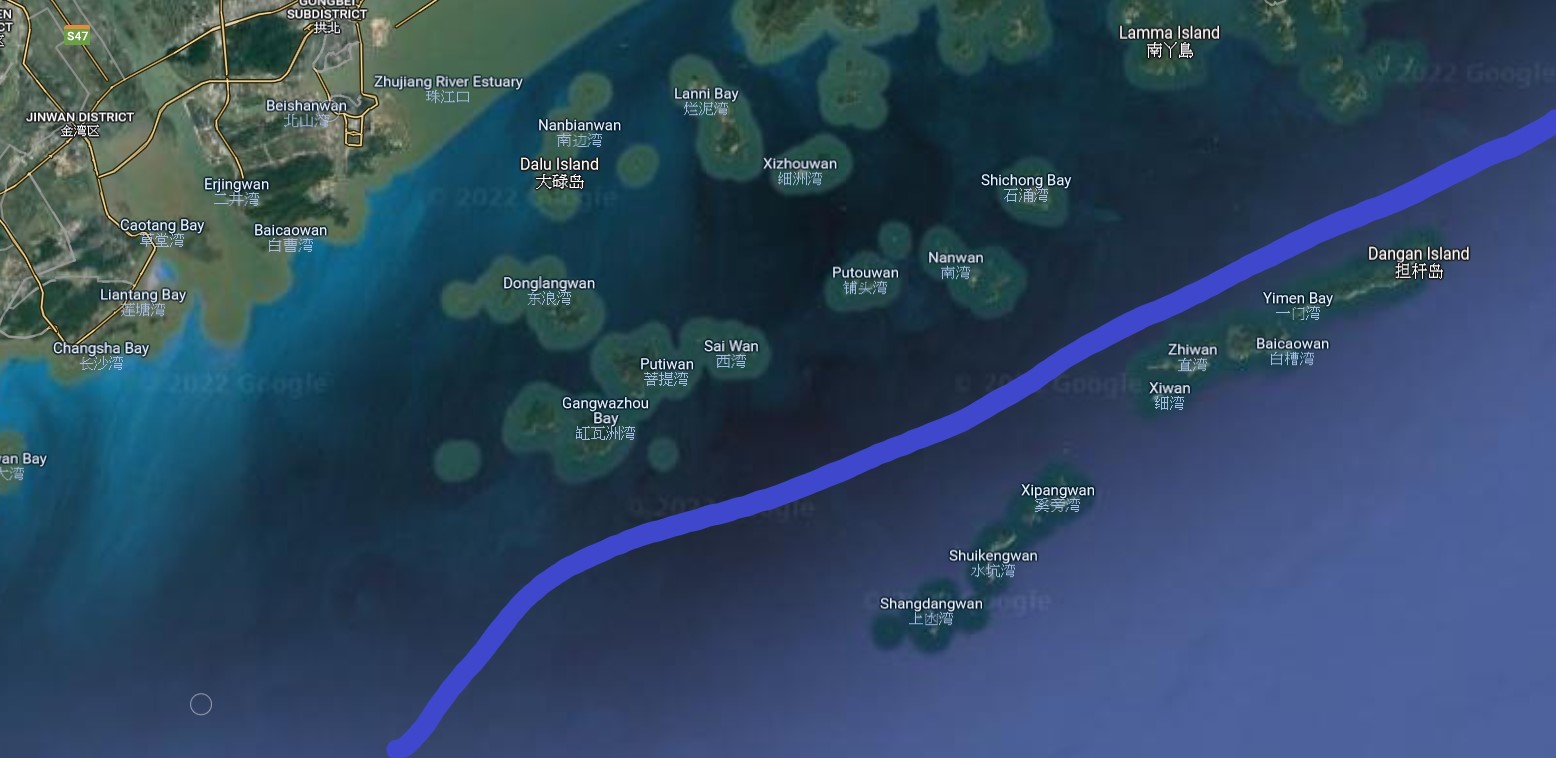
Unlikely, or at least unknown route of seabirds. These would be invisible from Po Toi because the distance would be too far.

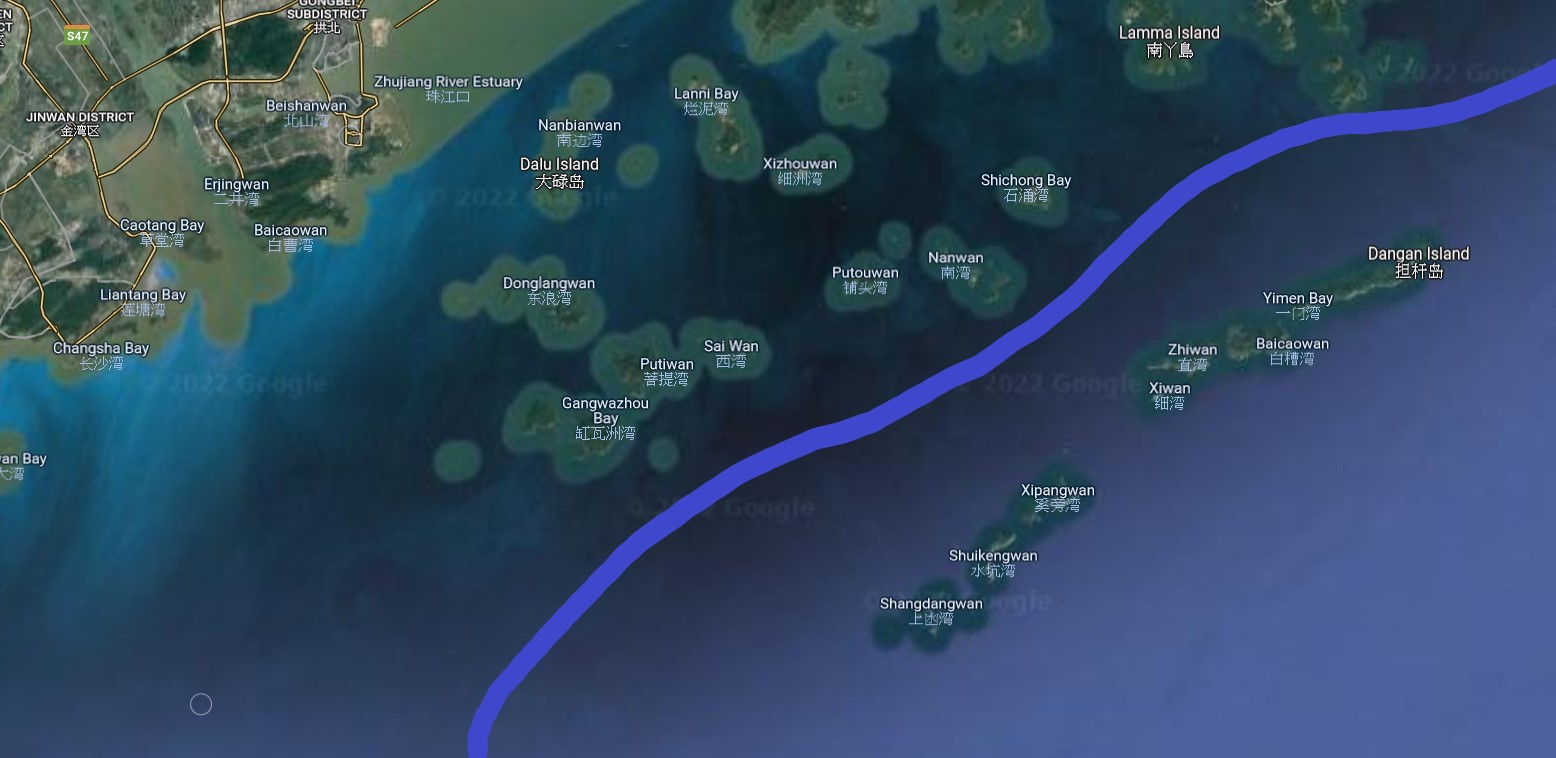
Very unlikely route for seabirds, as we don’t see any coming from the southwest, but from the west.
There are reasons to believe seabirds follow routes 1 and/or 2.
Firstly, there are a number of records of seabirds in the Deep Bay area/Mai Po. This area lies at the end of the southwest-northeast trajectory.
Black-legged Kittiwake on 8 March 1995
Black-legged Kittiwake on 5 April 2011
Black-legged Kittiwake on 10 March 2022
Long-tailed Jaeger on 9 May 1976
Herald Petrel on 17 March 2001
Red-footed Booby on 3 May 2016
Streaked Shearwater on 9 April 2012
These are the ones I could find in the Bird Reports and, for the recent ones, on eBird. Note that Red-footed Booby and Long-tailed Jaeger also have been seen in autumn. Anyway, there have been some pelagic birds that flew up the Pearl River Delta in spring. Needless to say, most seabirds turn east well before they end up in Deep Bay.
Secondly, another data point is the observation of two Bulwer’s Petrels and three Streaked Shearwaters on 18 April 1990 (Bird Report 1990, pages 183-184). These birds were seen to the west of the Soko Islands, in the Lantau Channel.
And thirdly, this map of sightings of Short-tailed Shearwaters in southern waters is another useful set of datapoints.

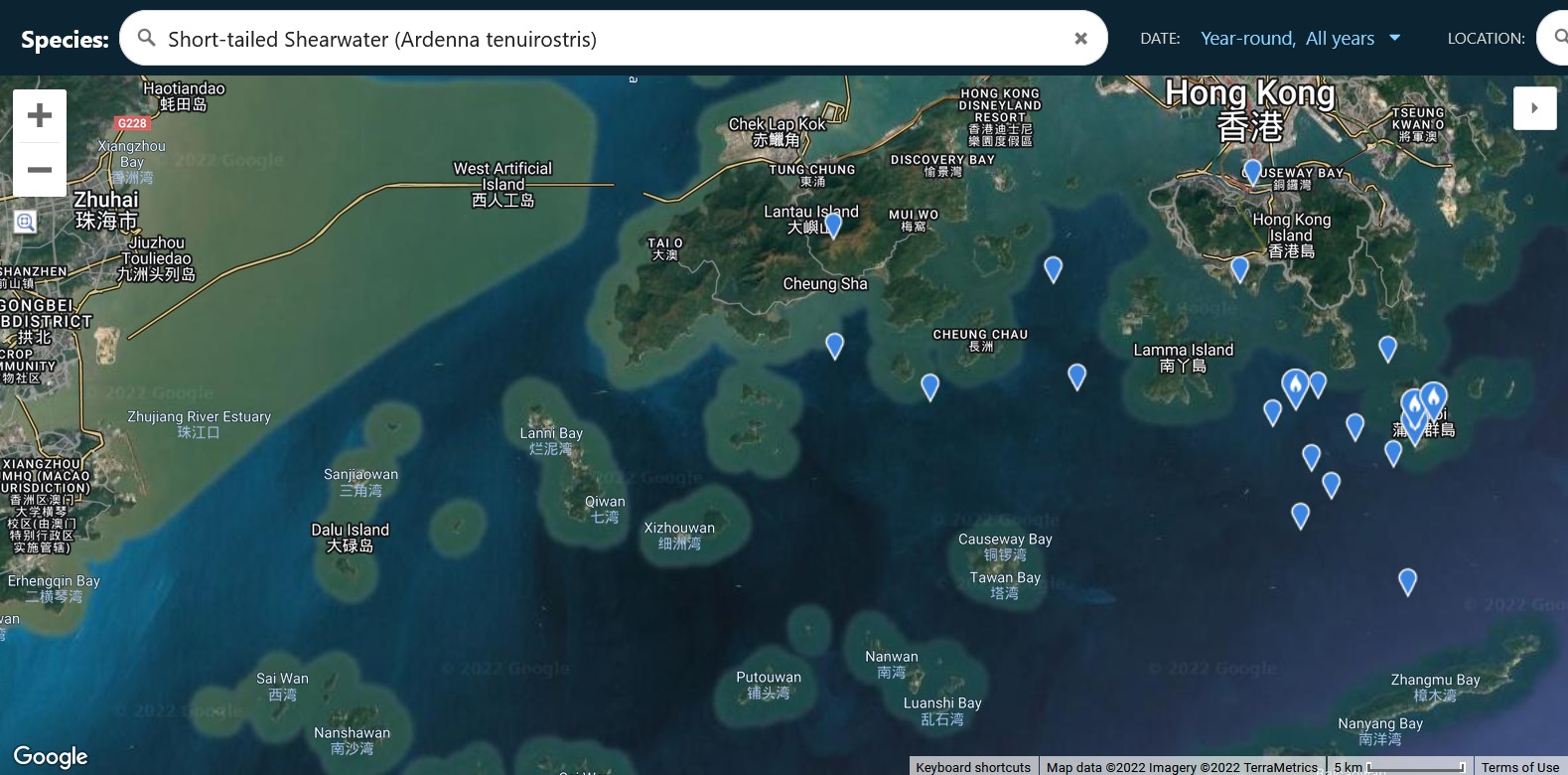
Connecting these data, you end up with probable routes 1 and 2 that were posted above. These indeed seem to be two probable and perhaps even likely routes of seabirds that eventually pass Po Toi.
But seawatching from the southern tip of Lantau Island or from the Soko Islands would reveal a lot more. And preferably, two or more people should watch from these locations and also from Po Toi at the same time and then compare results.
Autumn migration
Although it seems that the route in autumn, certainly as seen from Po Toi, is very similar to the one in spring, it seems odd to me why this would be the case. One difference is the distance of birds from Po Toi, as mentioned earlier. We still see birds make the bend to the west, but they seem to follow a more southerly positioned route, hence a bit further away from Po Toi. Maybe they don’t fly into the Lantau Channel and bend southwards sooner. And also note that there are much less seabirds in autumn than in spring, probably because the majority keeps to the south of the Dangan Islands, not entering the Lema Channel.
Distance to birds from Nam Kok Tsui
Another point to discuss is the distance to birds seen from Nam Kok Tsui. This is related to the question of whether the birds that we see and report are indeed in Hong Kong territory or in Chinese territory. This is a complicated matter.
Migrants that pass-by within about a nautical mile or 1.85 km, should be within Hong Kong territory. That’s a reasonable distance. For example, it’s the same as from the most northerly hide at Deep Bay to the pier of Tsim Bei Tsui.
But of course, A/ the border is not visible off Po Toi, B/ the distance to any bird is unknown and just a guesstimate, and C/ the size of a bird might appear it to be further (smaller bird) or closer (larger bird) than it really is. In extreme cases (which are not necessarily exceptional cases!) one could tell with certainty that a bird is closer than 1 nautical mile away from a watchpoint on Nam Kok Tsui. To be absolutely certain that it is further than 1 nautical mile, is often another matter. And there will always be a large ‘grey zone’ of birds to which the distance is doubtful.
I’ve been asked what percentage of birds off Po Toi are seen within Hong Kong boundaries, and I have no answer to that question. But, the combination of the observer/seawatcher being well within Hong Kong territory and 1 nautical mile being a decent distance, I report my personal sightings as within Hong Kong. Except for a few cases in which it was clear that a seabird flew close to or behind the red light boat, which is 4.4 km to the southwest of Nam Kok Tsui and thus in China.
That brings us to another important point: it can depend in which direction the observer is looking. In other words, if you’d be looking straight to the west, or to the east, or anywhere to the north, the distance to the bird might be several kilometres, and it still would be in Hong Kong waters. The problem occurs when you look to the south, because you’ve only got that 1 nautical mile of Hong Kong territory.
And that brings us to yet another important point: birds seem to come from or fly to the northeast. “Seems to”, because the only way to be totally sure would be to look at the birds from above. In the field, of course, we can’t do that. But I do have the impression that seabirds and other migrants don’t really choose the open sea, in an eastern direction, but fly to the northeast.
I know it’s not much, but there is one record to support this view, namely of a Bulwer’s Petrel seen from a boat. Here is the location of the bird:

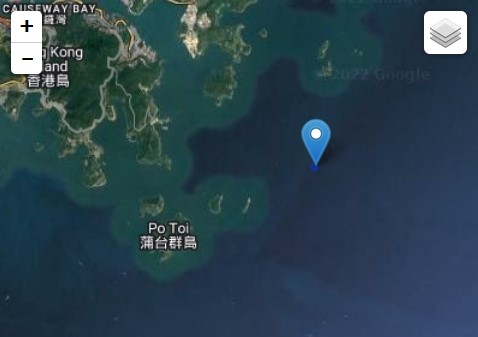
Assuming that it flew along the usual route and thus passed Po Toi on the south side (at least it didn’t come from the west when it was seen, but rather from the southwest), it bended quite a bit to the northeast after passing Po Toi, coming from the west before approaching the island.
If we continue to draw our routes 1 and 2 to the northeast, we get something that resembles the blue line in the following picture. The red line is the border. Yes, I drew the route (blue line) within Hong Kong territory and it’s perfectly possible that some birds fly to the south of the border (in China) and some to the north of it (in Hong Kong), before passing Po Toi. But my point is that, once they have passed Po Toi and follow their north-eastern trajectory, they’ll firmly will fly in Hong Kong territory (like the Bulwer’s Petrel) and still feel they’re in the open sea, with land further to the north. Note that I often see (sea)birds coming from the northwest in spring, rather than from the west, as the blue line illustrates.

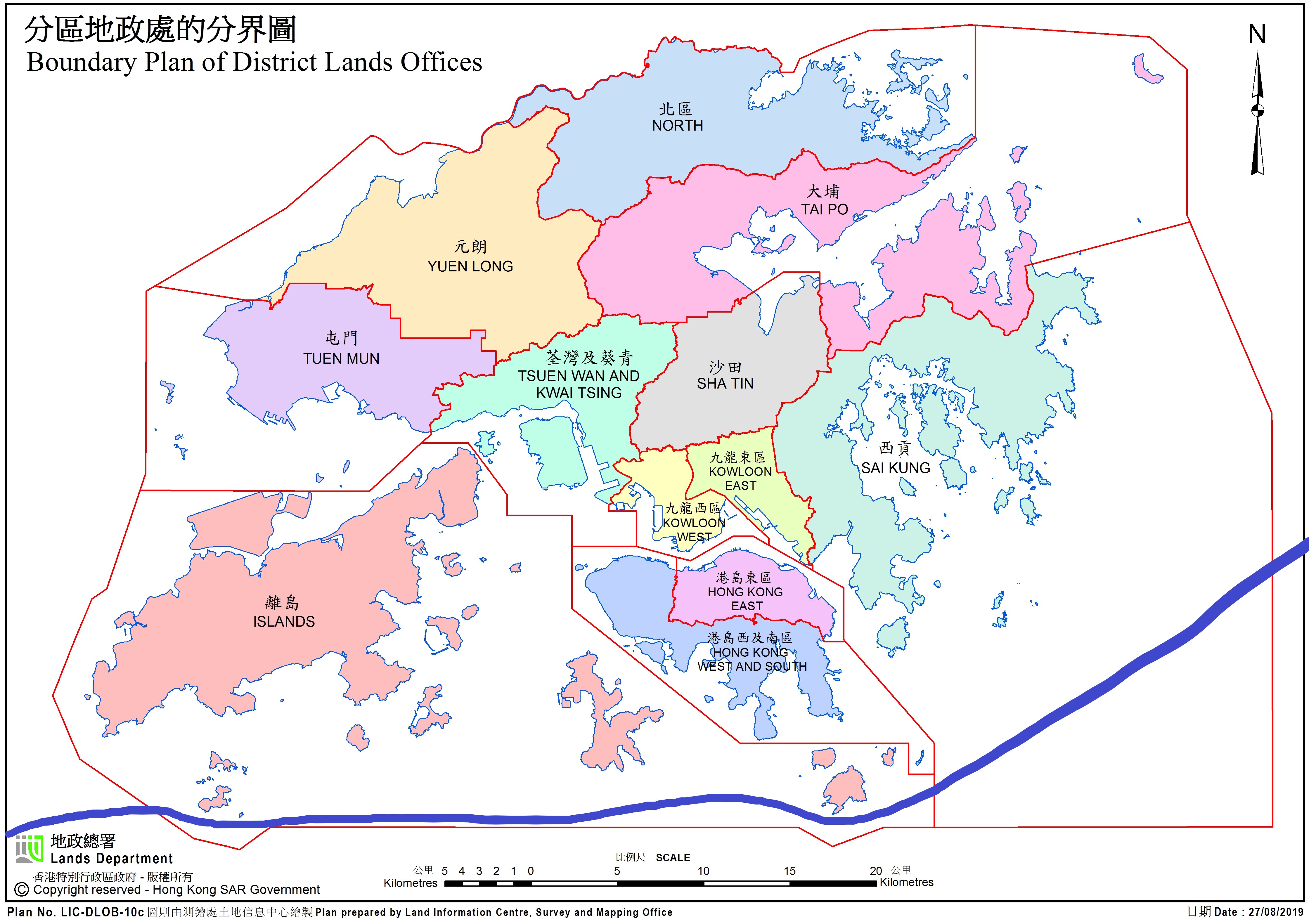
So, to summarize, we’ve got four points to take into account:
1/ the observer is well within Hong Kong territory
2/ 1 nautical mile is a decent distance
3/ the observer might look several kilometres out, anywhere from west, over north, to east, and the bird that is seen then will be in Hong Kong
4/ there is a very high change that a migrant (sea)bird at one point in time flies through Hong Kong territory, especially in the most south-easterly corner
A final note is that a request to report which birds are certainly in China (if any) and which are certainly in Hong Kong, seawatching from Po Toi would become a mission impossible to me and in that case I would gladly leave this task to Ethan Hunt…


